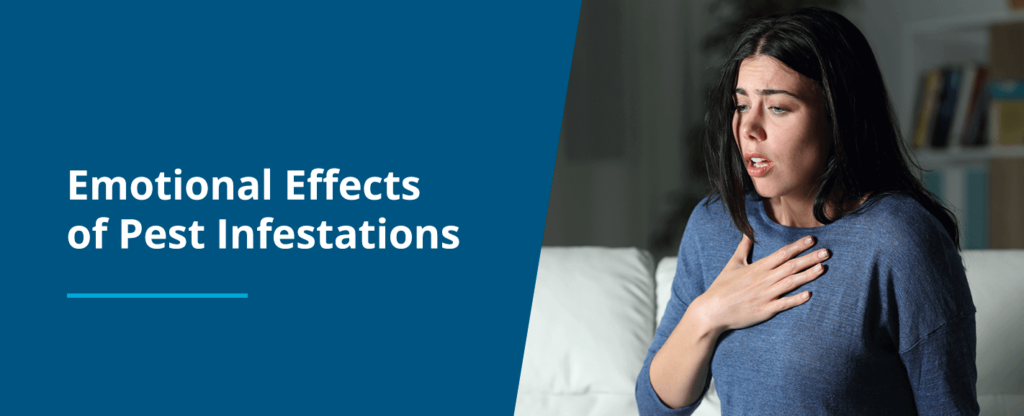See This Report about Eco Bed Bug Exterminators Dc
See This Report about Eco Bed Bug Exterminators Dc
Blog Article
Facts About Eco Bed Bug Exterminators Dc Revealed
Table of ContentsExamine This Report on Eco Bed Bug Exterminators DcAll about Eco Bed Bug Exterminators DcThe smart Trick of Eco Bed Bug Exterminators Dc That Nobody is Talking AboutThe Ultimate Guide To Eco Bed Bug Exterminators DcExcitement About Eco Bed Bug Exterminators Dc
Because pesticides are poisonous, they are also potentially dangerous to human beings, pets, other microorganisms, and the atmosphere. Individuals who make use of chemicals or consistently come in contact with them must understand the family member poisoning, prospective health results, and preventative procedures to reduce exposure to the items they use. Risk, or threat, of utilizing pesticides is the possibility for injury, or the level of danger associated with making use of a pesticide under a given set of problems.
Applicators can lessen or nearly get rid of direct exposure-- and hence minimize threat-- by following the tag instructions, utilizing personal protective clothing and devices (PPE), and handling the pesticide appropriately. As an example, greater than 95 percent of all chemical direct exposures come from dermal exposure, largely to the hands and forearms. By wearing a pair of unlined, chemical-resistant handwear covers, this sort of exposure can be nearly removed.
The hazardous results that take place from a solitary exposure by any course of entrance are described "severe results." The four courses of direct exposure are facial (skin), breathing (lungs), oral (mouth), and the eyes. Acute toxicity is figured out by examining the dermal poisoning, inhalation poisoning, and dental poisoning of examination pets.
Indicators on Eco Bed Bug Exterminators Dc You Need To Know
Severe toxicity is determined as the quantity or focus of a toxicant-- the a.i.-- needed to eliminate 50 percent of the animals in a test population. This procedure is normally shared as the LD50 (dangerous dose 50) or the LC50 (lethal concentration 50). Additionally, the LD50 and LC50 values are based on a single dose and are taped in milligrams of chemical per kg of body weight (mg/kg) of the guinea pig or partially per million (ppm).
The reduced the LD50 or LC50 worth of a chemical product, the greater its poisoning to human beings and animals. Pesticides with a high LD50 are the least hazardous to human beings if used according to the directions on the item label. The chronic poisoning of a pesticide is established by subjecting guinea pig to long-lasting direct exposure to the energetic ingredient.
The chronic poisoning of a pesticide is harder than intense toxicity to identify via laboratory evaluation. Products are classified on the basis of their relative intense poisoning (their LD50 or LC50 values). Chemicals that are classified as highly harmful (Poisoning Group I) on the basis of either dental, dermal, or breathing toxicity need to have the signal words threat and toxin published in red with a head and crossbones symbol plainly displayed on the front panel of the bundle label.
The severe (solitary dosage) oral LD50 for chemical products in this group varies from a trace amount to 50 mg/kg. Exposure of a few decreases of a material taken orally can be deadly to a 150-pound person. https://www.imdb.com/user/ur179001523/. Some chemical products have just the signal word risk, which tells you absolutely nothing concerning the severe poisoning, simply that the item can trigger severe eye damages or severe skin irritability
Our Eco Bed Bug Exterminators Dc Ideas
In this category, the intense oral LD50 ranges from 50 to 500 mg/kg. A tsp to an ounce of this material might be fatal to a 150-pound individual (bed bug heater rentals). Pesticide products categorized as either slightly harmful or reasonably nontoxic (Toxicity Classifications III and IV) are required to have the signal word CAUTION on the chemical label

All pesticide toxicity values, worths the Consisting of, can be found on discovered product's Material Safety Product Security InformationMSDS). Pesticide labels and MSDS can be acquired from retailers or manufactures - official website https://packersmovers.activeboard.com/t67151553/how-to-connect-canon-mg3620-printer-to-computer/?ts=1710874767&direction=prev&page=last#lastPostAnchor. The signs and symptoms of chemical poisoning can vary from a moderate skin inflammation to coma or even death.
Because of possible wellness concerns, chemical users and trainers need to acknowledge the common signs and signs of pesticide poisoning. The results, or signs, of pesticide poisoning can be broadly specified as either topical or systemic.
The Single Strategy To Use For Eco Bed Bug Exterminators Dc
Dermatitis, or inflammation of the skin, is accepted as the most typically reported topical result linked with pesticide direct exposure. Symptoms of dermatitis variety from reddening of the skin to rashes and/or sores. Some people often tend to cough, hiss, or sneeze when revealed to chemical sprays. Some people respond to the solid odor and annoying effects of petroleum distillates utilized as service providers in pesticide products.
This sign usually subsides within a few mins after a person is removed from the direct exposure to the toxic irritant. A response to a chemical item that triggers someone not only to sneeze and cough however likewise to develop severe acute breathing signs is a lot more most likely to be a true hypersensitivity or sensitive reaction.
Systemic effects are rather different from topical effects. They often take place away from the initial factor of contact as an outcome of the pesticide being taken in into and dispersed throughout the body. Systemic results often include nausea or vomiting, throwing up, tiredness, headache, and digestive conditions. In sophisticated poisoning cases, the person might experience changes in heart rate, trouble breathing, convulsions, and coma, which might bring about death.
Report this page